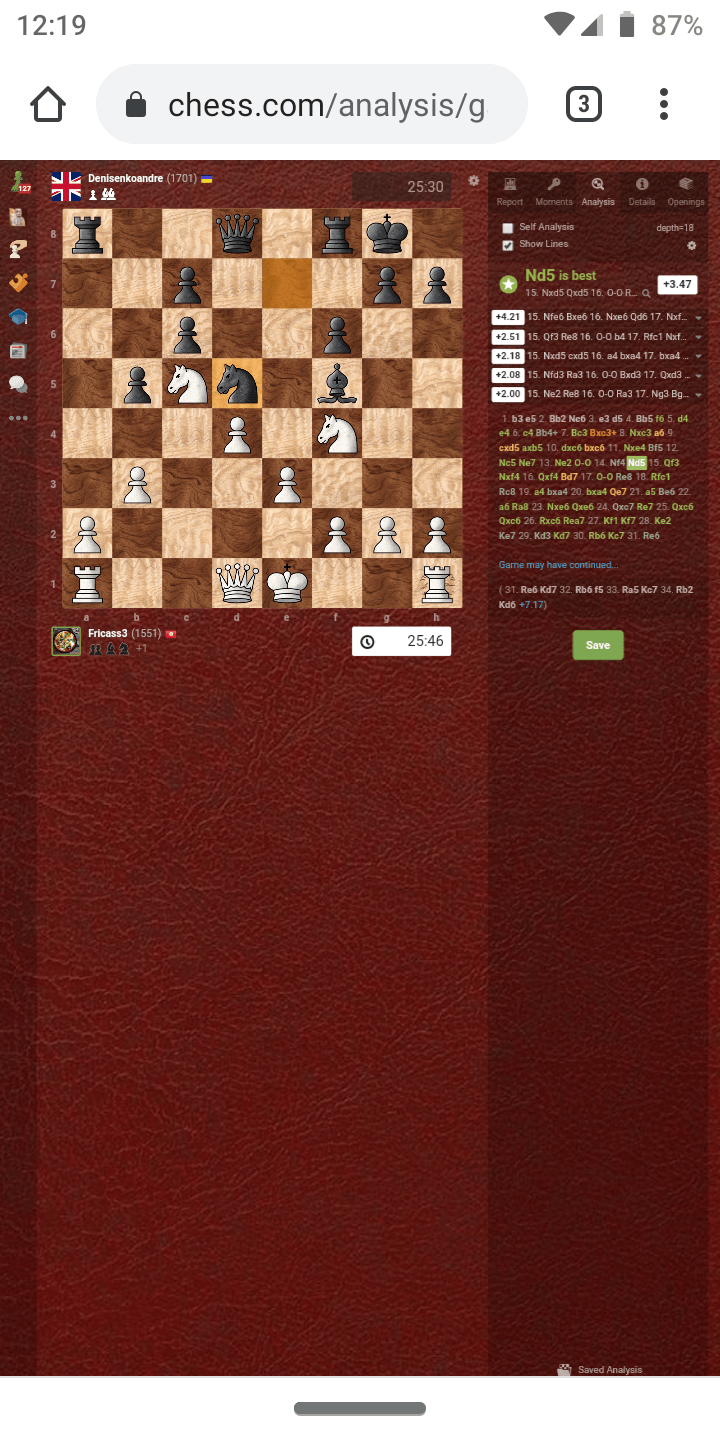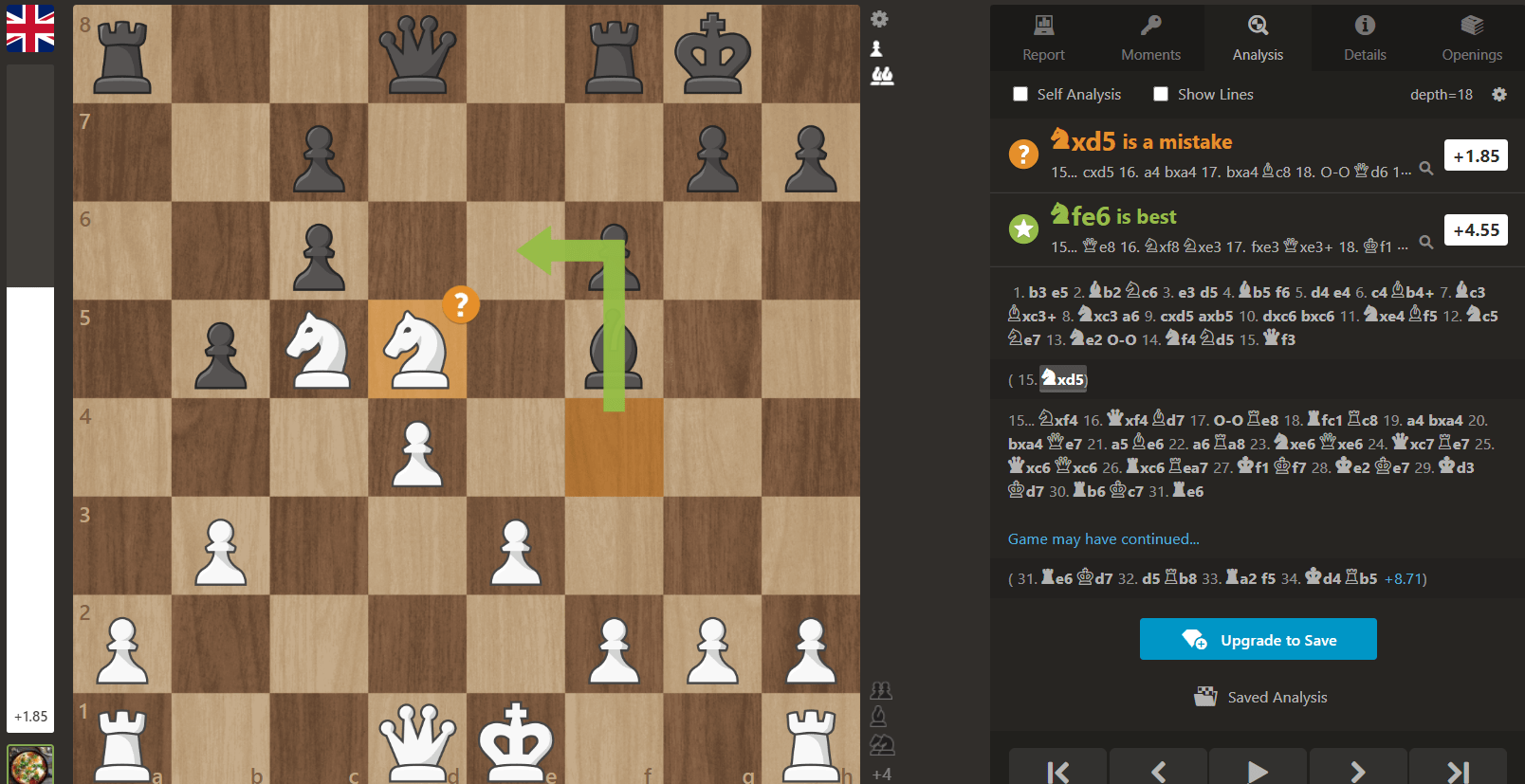Hello,
I just had this game where I realized I actually had a better move to do after playing one. So after the game I went on to the analyzer to see how the engine would see the move I thought I should have played instead of the move I actually played but the engine wasn't suggesting it at all.
But surprisingly, the main line given by the engine (15. Nxd5 cxd5) gives white only a +2.05 advantage, while the other move I thought of afterwards (15. Ne6) gives an immediate advantage of +3.95 for white.
Here is the game, it starts at move 15 with white to play : https://www.chess.com/analysis/game/live/6089648379?tab=report
Is my understanding of how this all works wrong or is the engine actually missing the best move here? This would be strange since he is supposed to analyze at a depth of 18 (meaning 18 moves ahead?).
The computer certainly sees your move as best.
 I would guess that Nd5 was considered best at a lower depth level.
I would guess that Nd5 was considered best at a lower depth level.










Hello,
I just had this game where I realized I actually had a better move to do after playing one. So after the game I went on to the analyzer to see how the engine would see the move I thought I should have played instead of the move I actually played but the engine wasn't suggesting it at all.
But surprisingly, the main line given by the engine (15. Nxd5 cxd5) gives white only a +2.05 advantage, while the other move I thought of afterwards (15. Ne6) gives an immediate advantage of +3.95 for white.
Here is the game, it starts at move 15 with white to play : https://www.chess.com/analysis/game/live/6089648379?tab=report
Is my understanding of how this all works wrong or is the engine actually missing the best move here? This would be strange since he is supposed to analyze at a depth of 18 (meaning 18 moves ahead?).